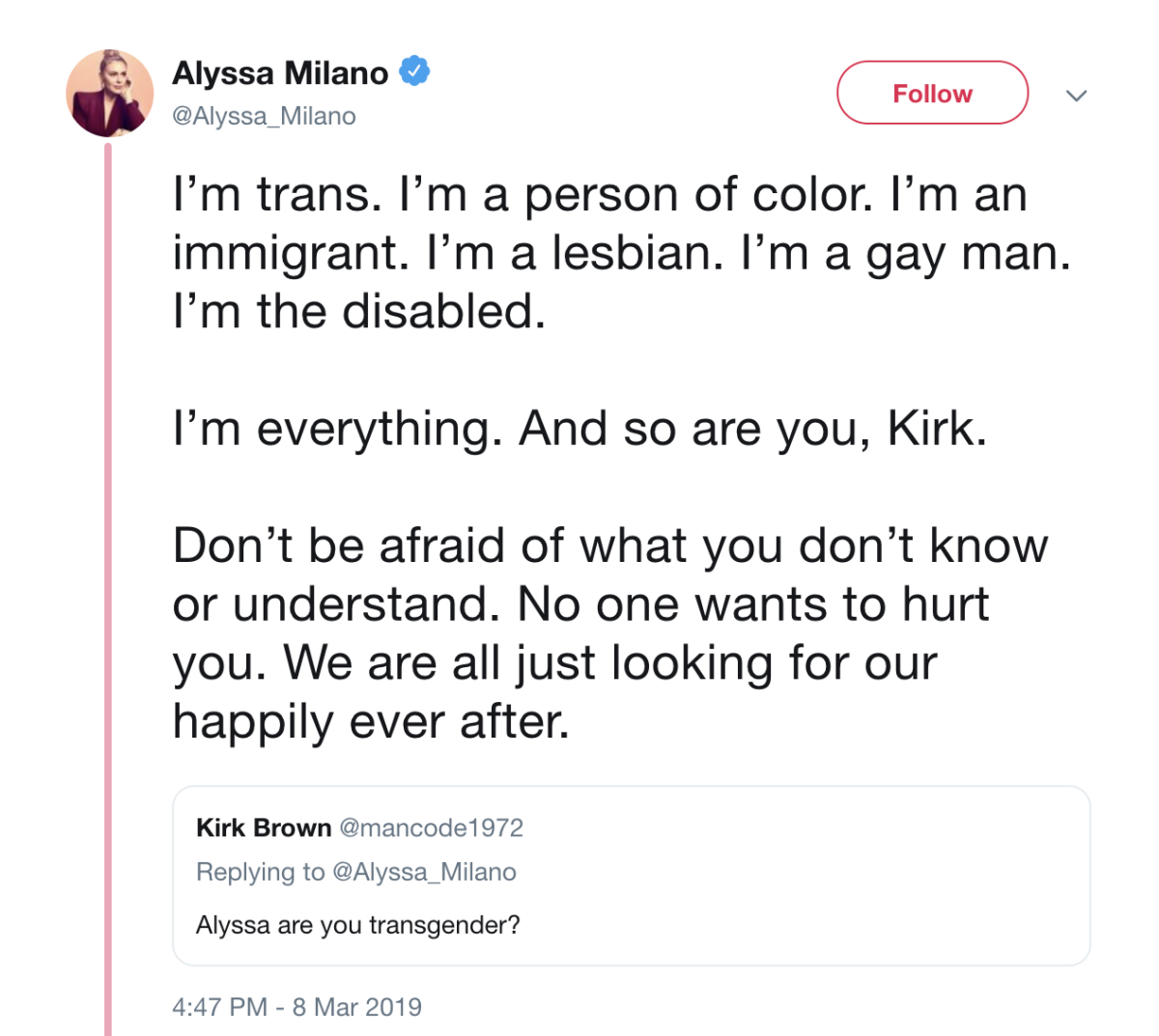
_Roshae Hemmings is a first year journalism major at MU. She is an opinion columnist who writes about civil rights._
In a time where activism, social consciousness and awareness is prominent, allyship is a way in which many showcase their solidarity with marginalized groups. However, at times there can be confusion as to what role allies are to play in the movement towards acceptance and equality.
Such was the case with actress Alyssa Milano. When asked if she was transgender by a Twitter user, Milano responded by [tweeting](https://twitter.com/Alyssa_Milano/status/1104181833124610050), “I’m trans. I’m a person of color. I’m an immigrant. I’m a lesbian. I’m a gay man. I’m the disabled. I’m everything. And so are you, Kirk. Don’t be afraid of what you don’t know or understand. No one wants to hurt you. We are all just looking for our happily ever after.”
The tweet was met with backlash, with many asserting that this particular statement is everything that allyship isn’t. Given the conversation that followed Milano’s controversial tweet, I thought I’d turn this into a teachable moment and use the situation to demonstrate how not to be an ally.
####Number 1: Don’t make things about you, the person in a position of privilege.
One of the many issues with Milano’s original statement, and subsequent apology, was that there were multiple “I” statements; “I’m trans. I’m a person of color. I’m everything.” While she was clearly using metaphor to show that she loves the people and causes that she is an advocate for, those statements make it seem as if allyship is self-serving, when it is the exact opposite. Being an ally requires a sense of empathy and willingness to steer the attention from you as a someone who is privileged to those who you are advocating for.
####Number 2: Listen to those who you are advocating for.
After Milano’s initial statement, social media, was not having it. Many responded with claims that the tweet was ignorant and insensitive, with activist and writer George M. Johnson tweeting, “No. You are an advocate. Be ok with that. This isn’t the way to say you are with us. You can’t just fake an experience you don’t have. You don’t navigate any space like these groups. This is the “I don’t see color” approach which is oppression and erasure.”
Despite people offering up their thoughts and perspectives, Milano responded with a formal apology in which she said, “I learned it doesn’t matter how pure your intentions are, or your 30 yrs of advocacy work & activism, if you use well established poetic license & nuance the very people you passionately fight for will be upset because you didn’t say it the literal way they’d prefer.”
There are numerous things wrong with this statement, primarily the fact that it is somewhat defensive and deflective. Opposed to listening to what other activists and allies had to say about allyship, she turned a pointed finger to them asserting that she was right in the situation. If there is any opportunity to better serve as an ally, listening is an important step.
####Number 3: Be willing to learn.
This is arguably the most important thing that an ally can do. In her apology, Milano used her 30 years of activism as a means to defend her statement. In essence, her statement came off as, “Because I have been involved with activism for so long, there is no possible way that I could offend anyone of these communities.” While it may have been true that she meant no harm in what she tweeted, those who read it were offended. Instead of being dismissive, Milano should have taken the opportunity to listen to the people that were calling her out and taken those comments as an opportunity to learn how to be a better ally.
When done properly, allyship can be a powerful thing. It is an opportunity for those in positions of privilege to learn from the marginalized and assist in the latter’s efforts for equality and equity. However, the roles that allies play within the realm of activism should be understood.